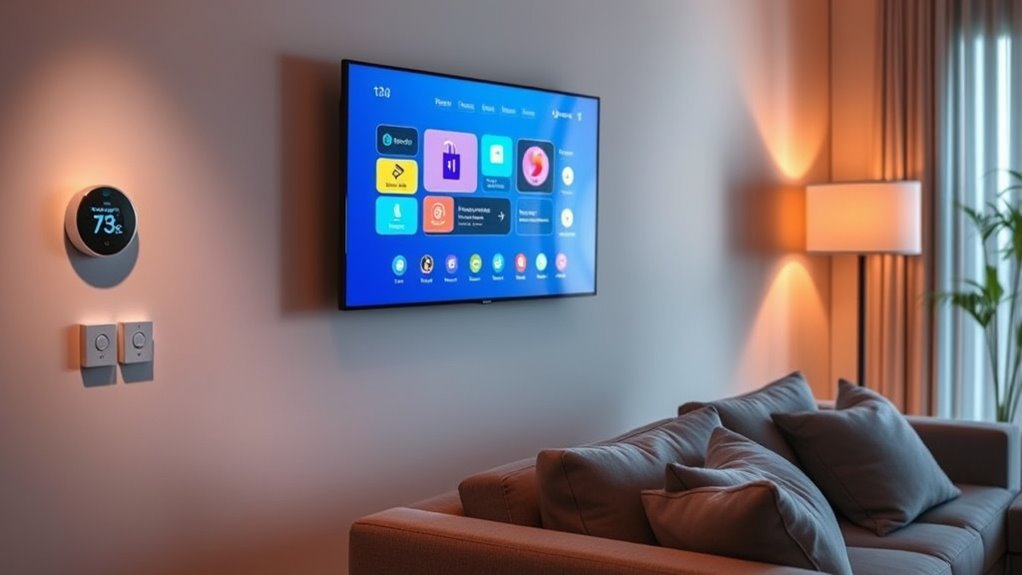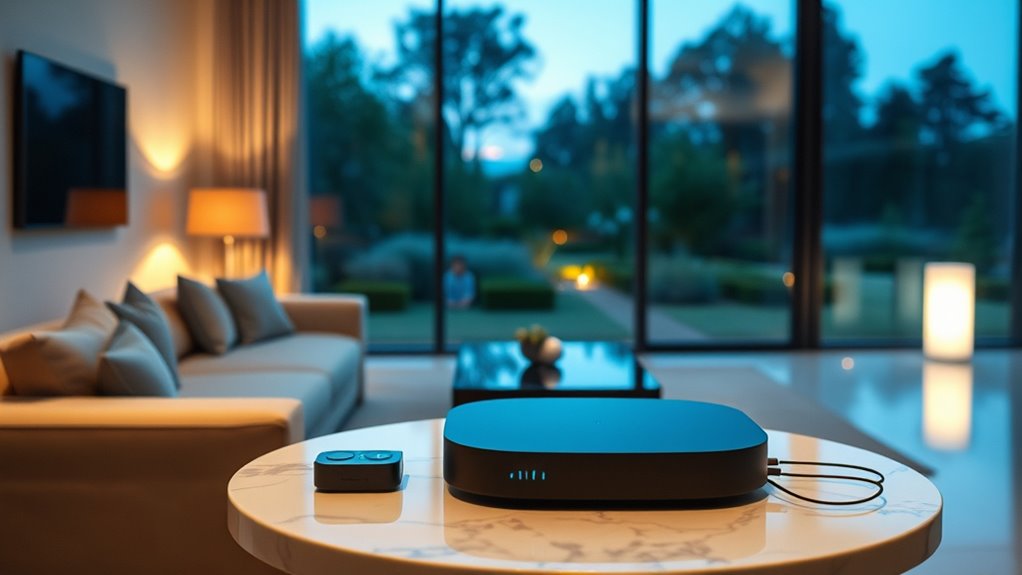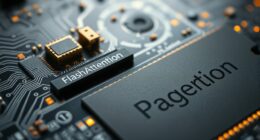Recent updates to Matter and Thread standards enable your smart home devices to process voice commands locally, making interactions faster, more private, and secure. These upgrades allow devices to communicate seamlessly through a resilient mesh network, reducing delays and reliance on cloud services. With smarter energy management and easier setup, your home becomes more efficient and harmonious. Exploring these advancements will show you how your smart home can become more private, responsive, and eco-friendly—if you keep exploring.
Key Takeaways
- Local AI processes voice commands within the home, enhancing privacy and reducing response times.
- Matter standardizes device compatibility, simplifying setup and ensuring seamless interoperability across brands.
- Thread creates a resilient mesh network, enabling reliable and efficient device communication.
- Combining Matter and Thread improves energy management through smarter device collaboration.
- Overall, these updates promote a secure, responsive, and eco-friendly smart home environment.

Have you ever wondered how your smart home can become even more private and responsive? The latest updates in Smart Home Local AI, especially with Matter and Thread, make that possible. These technologies allow your devices to communicate more efficiently, securely, and locally, giving you greater control over your environment. One of the most noticeable improvements is in voice control. Instead of relying on cloud-based servers, your voice commands are processed locally, which means faster responses and enhanced privacy. When you ask your smart speaker to turn on the lights or adjust the thermostat, the command is handled directly within your home network. This not only reduces lag but also minimizes the risk of data breaches because your voice data doesn’t need to travel outside your home.
Local AI with Matter and Thread enhances privacy and responsiveness by processing voice commands directly within your smart home network.
Energy management is another vital aspect that benefits from these advancements. With local AI and the new standards, your smart devices can collaborate more intelligently to optimize energy consumption. For example, your smart thermostat can learn your daily patterns and adjust temperatures accordingly, all without sending data to external servers. This local processing ensures that your energy usage is efficient, reducing costs and environmental impact. Additionally, connected devices can communicate seamlessly using Thread, creating a mesh network that’s more resilient and responsive. This means your smart home can adapt quickly to changes, like turning off unused appliances or adjusting lighting based on occupancy, all while keeping your data private.
The integration of Matter and Thread also simplifies setup and expands device compatibility. With Matter, you don’t have to worry about multiple apps or proprietary systems. Instead, your devices work together through a common protocol, making your smart home more unified and easier to manage. Thread enhances this by providing a robust network that supports many devices communicating simultaneously without congestion or delays. This means your voice control gets quicker, more reliable responses, and your energy management becomes even smarter.
In essence, these updates empower you to create a smart home that’s more private, responsive, and energy-efficient. You’ll notice that commands are processed faster, and your devices work more harmoniously. Plus, you gain peace of mind knowing that your data stays within your home, not floating around in clouds. These standards also promote interoperability, enabling diverse devices to function together seamlessly. As these standards continue to evolve, your smart home becomes not just more convenient but also more secure and environmentally friendly. With local AI, your home truly becomes smarter, safer, and tailored to your lifestyle, all while respecting your privacy.
Frequently Asked Questions
How Secure Is Local AI Data Compared to Cloud-Based Systems?
Your local AI data is generally more secure than cloud-based systems because it reduces privacy concerns and keeps data within your home network. You maintain data sovereignty, meaning you control who accesses your information. With local AI, there’s less risk of hacking or breaches from external sources. Plus, you can implement your own security measures more easily, making your smart home safer and more private overall.
Can Local AI Integrate With All Existing Smart Home Devices?
Yes, local AI can integrate with many existing smart home devices, but device compatibility varies. You might face integration challenges if your devices aren’t compatible with Matter or Thread protocols. To guarantee smooth setup, check each device’s compatibility and consider using bridges or hubs that support multiple standards. Staying updated on firmware and software updates also helps improve integration and reduces potential challenges.
What Are the Cost Differences Between Local AI and Cloud Services?
Think of local AI and cloud services like comparing a bicycle to a car. Generally, local AI has higher upfront costs for hardware but lower ongoing expenses, making it more affordable long-term. Cloud services often have lower initial fees but monthly subscription costs add up. For a clear cost comparison, you should do an affordability analysis, considering hardware, maintenance, and subscription fees to see which option best fits your budget.
How Easy Is It to Update Local AI Software Manually?
Updating your local AI software manually is fairly straightforward, giving you full user control. You typically download the latest firmware or software patches from the manufacturer’s website or app, then follow simple instructions to install them. This process allows you to manage updates on your schedule, ensuring your system stays current without relying on automatic updates. Just make sure to back up your data before manual updates to prevent any loss.
What Are the Limitations of Local AI in Smart Home Automation?
Think of local AI as a loyal but sometimes overburdened assistant; it’s limited by hardware constraints and can struggle with complex tasks. Privacy concerns are minimized, but you might face restrictions in automation capabilities, especially with advanced features. It’s like trying to fit a grand orchestra into a small room—you get privacy but at the expense of some flexibility and power, which can hinder your smart home’s seamless experience.
Conclusion
So, with Matter and Thread revolutionizing your smart home, you’re not just keeping up — you’re stepping into the future of living. Imagine your devices communicating faster than ever, running on local AI that’s smarter than any human brain. This isn’t just an upgrade; it’s a complete transformation of your everyday life, making it effortless, secure, and mind-blowingly seamless. Get ready, because your smart home is about to become the most intelligent, intuitive place you’ve ever known.









